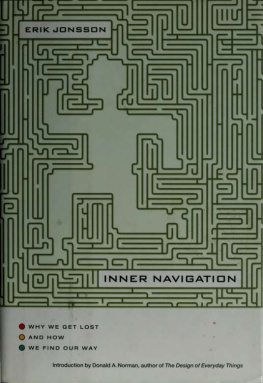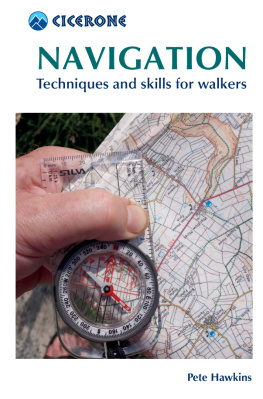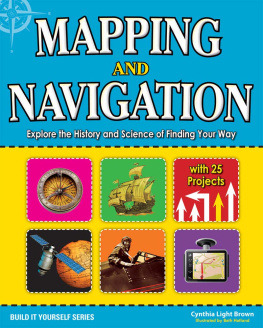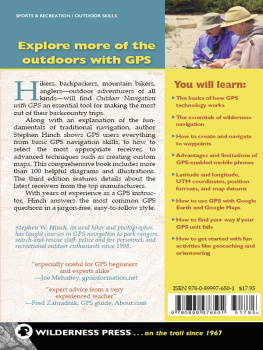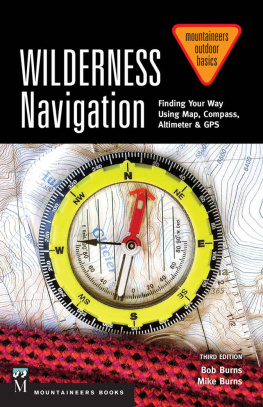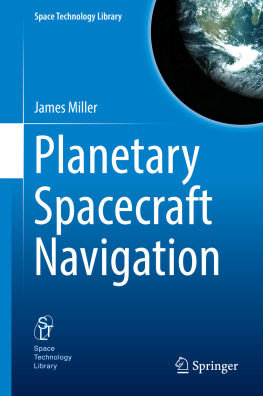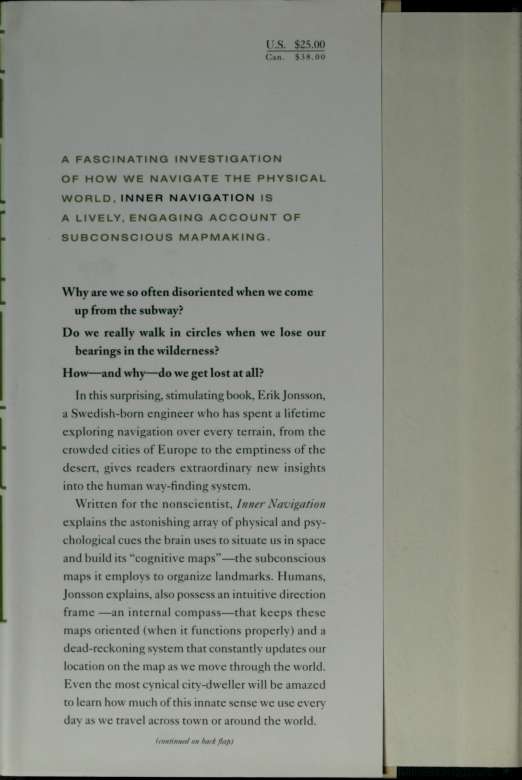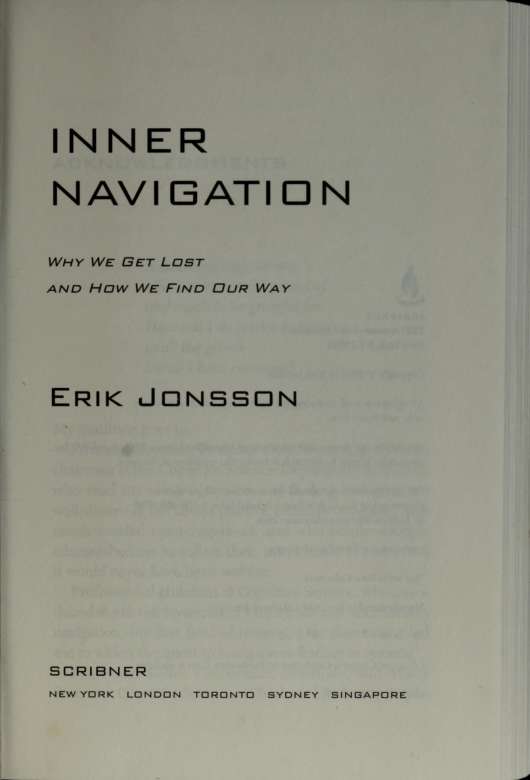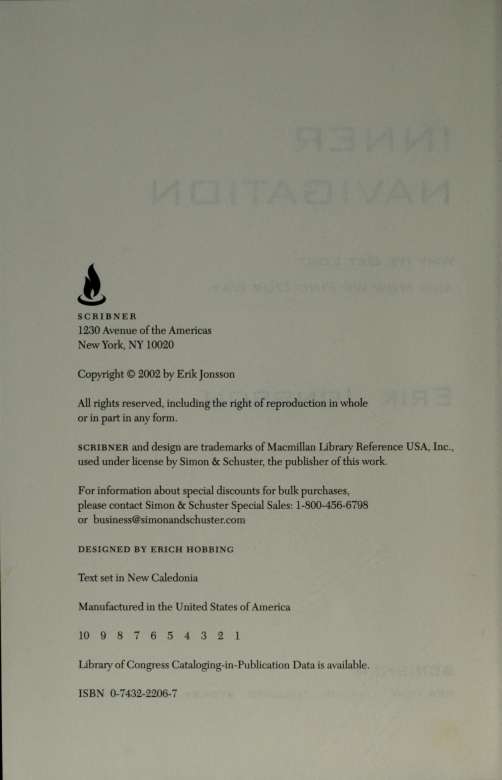This book made available by the Internet Archive.
ACKNOWLEDGMENTS
A daunting task for me, who has little to be proud of and much to be grateful for How can I do justice in words to all the givers for all I have received?
My gratitude goes to:
First and foremost, Professor Don Norman, at the time chairman at the Cognitive Science Department at UCSD, who read my many essays on way-finding and gave me well-deserved, but always positive, criticism combined with much needed encouragement, and who finally strongly admonished me to collect them into a book. Without him it would never have been written.
Professor Ed Hutchins at Cognitive Science, who introduced me to the mysteries of Polynesian and Micronesian navigation, my first field of interest. Our discussions led me to widen the quest to human way-finding in general.
Professors Gilles Fauconnier, chairman, and Marty Sereno at Cognitive Science, with whom I had many inspir
6 / ACKNOWLEDGMENTS
ing discussions. Their interest in what I was doing was most stimulating.
Dr. Kechen Zhang, at the Salk Institute, with whom I discussed the similarities between human and animal way-finding, and who led me to many seminal articles about experiments with animals. He read and commented on my first draft of this book and kept encouraging me strongly to get it published.
Professor Bleckmann in Germany, who told me about his highly interesting turn-around experience during a forest hike in his youth.
My Canadian friend Anne Mills, who gave me precious information about her experience walking in a circle in the forest.
My hiking companions Virginia Flagg and Louis Brecheen, and also Lorna and my daughter Irline, who told me about their interesting reversals of orientation and mis-orientations. And many others with whom I discussed this subject and who provided valuable stories from their own experiences.
The Royal Institute of Navigation for giving me permission to quote extensively from Colin Irwin's fascinating article about underwater way-finding in their Journal of Navigation.
The journal Oceania for permission to quote from David Lewis's very interesting article about Aborigine way-finding.
Jake Morrissey, senior editor at Scribner, his assistant Ethan Friedman, and Brant Rumble, who streamlined my stack of essays into a book and caught the mistakes that old brains are heir to.
INTRDDUCTIDN
Once upon a time a strange man wandered into my office at the University of California, San Diego. Erik Jonsson was his name, and navigation was his game. "I think people have an inner compass," he told me, "and when it goes wrong, the most amazing things happen." And then for over an hour he told me tales of confusion, of mental maps and their relationshipor lack thereofto the real maps and the real world, and of his quest for understanding through the scientific literature.
I was fascinated by the stories and today, over ten years later, I still maintain that fascination. Erik, I soon learned, had a deep understanding of the scientific literature and a masterful understanding of real human behavior, especially the abnormalities of locating oneself in space.
I encouraged Erik to write his stories, to deepen his search. This book is the result. The stories charm, delight, and inform. I have learned more about the science of human navigation through Erik's writings than through the many scientific journals that I read.
We are indeed fortunate that Erik has such a remarkable sense of direction and location that, when he becomes dis
B / INTRDDUCTIDN
oriented, he can use the experience as a significant event that reveals clues to the workings of the mind. Don Norman
Professor of Cognitive Science Emeritus, University of California, San Diego; president, UNext Learning Systems; author of The Design of Everyday Things, Things That Make Us Smart, and The Invisible Computer
BEGINNING STATEMENT
The subject of this book is science
environmental cognitive science, to be precise
but it is still a very human book,
for I am a very human being
with all its weaknesses,
all its failings,
all its shortcomings,
and all its greatness.
INTROITUS
Our spatial ability is a truly wonderful system. Therefore, unless one is able to come up with a truly
wonderful description, it is bound to fall short.
What I will do is to show it from different angles and to hold up important details for closer scrutiny. This should enable you, my dear, attentive reader, to form
a good picture of it in your mind.
1 D / ERIK JDNSSDN
I do not make experiments, I analyze experiences; a method no longer in vogue, but still quite fruitful when done with care.
By reading this book
you will become aware of things deeply embedded in your
mind. The book will bring to the surface what you only had a vague hunch about. You will also discover things you never imagined existed there.
.
PART 1
STARTING DUT
In this part I will tell two true stories from my youth, strange happenings that intrigued me for the rest of my life, demanding an explanation.
Without the insigftt they provided, this hook would never have been written.
CHAPTER 1
STRANGE HAPPENINGS
I will start by explaining what happened to me in 1948 when I got "turned around" in Cologne. It was quite a long time ago, but the memory is still very vivid.
I arrived in Cologne early in the morning while it was still dark after a sleepless night in an overcrowded train from Ostend, Belgium, and slept for a couple of hours on a bench in the Central Station. After daybreak I set out towards the Rhine to find a steamer for a cruise on the river. I knew I was near the river and was puzzled when it never came in sight. Finally I asked for directions and was told to turn around. There was the river, and the steamers were in plain sight. I had been walking in the wrong direction, east instead of west, as I thought. Then I saw the sun coming out of the mist above the steamers. Sunrise in the west!
Well, that explained it. I must have become disoriented when I arrived by train during the night, so instead of going east I had actually been walking west, away from the river (Figure 1).
Now that I knew what had happened, everything would be all right, I thought. Not so! However much I told myself that the sun had to be in the east in the morning, I still felt that it was in the west and when I came to the Rhine I "saw"
EAST

WEST


